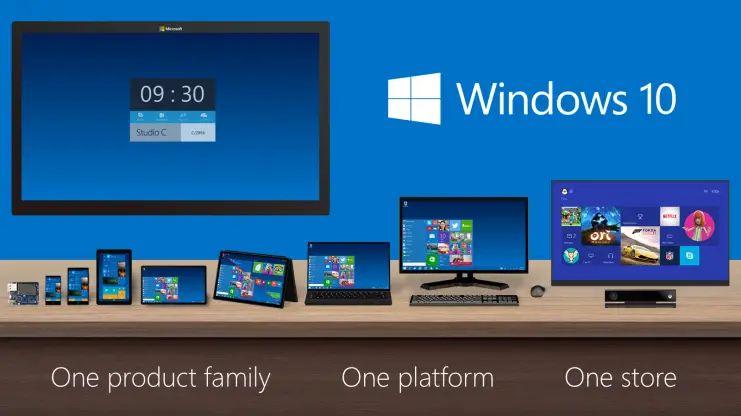First of all purposes, Windows 10 is still a Technical Preview, which means it’s a half-baked operating system – and so it’s expected to see some bugs or issues. Because the whole purpose of a technical preview is, so that device driver developers and software developers can start working on an updated version of their product, by the time the operating system hits RTM. Having said that, there is no harm in installing Windows 10, and take it for a spin. The first thing is that I would strongly recommend not to install Windows 10 Technical Preview on a production environment as most of the software won’t be officially tested or approved to be installed on Windows 10 so they is less chance to get support through the official channel. It’s best to install it on a test environment or one of the virtual machines like using a Hyper-V or VMWare or any number of Visualization software available or your personal laptop/desktop or in dual boot. To start off, check the system requirement to make sure everything is compatible. These are the same as what is required for Windows 8.1, which basically means: You can check out this article which clears up most of the system requirement questions about Windows 10 Technical Preview for Enterprise system requirements. Read: Can my computer run Windows 10? If you are planning you upgrade your current operating system supports upgrade from Windows 7 (including Windows 7 SP1), Windows 8, or Windows 8.1. A few things to keep in mind if you are using a non-English version of the operating system it won’t upgrade your Windows settings or apps. For now you can upgrade from English, Chinese Simplified, or Brazilian Portuguese language. If you are planning to upgrade it’s a good idea to update your operating system to make all the patches are up to date. It’s also a good idea to upgrade all the driver software. Disable your security software because they sometimes create trouble while upgrading your operating system. Don’t forget to back up your files and software to an external drive or to the cloud to be on the safe side. You can download the Windows 10 ISO. Now before you go through the upgrade / clean install process, please verify the MD5 Hash or checksum of the ISO file that you downloaded. We do this to make sure we don’t have a corrupt or incomplete download. Do note one thing – Windows Update will be set to automatically install important updates as they become available. You won’t be able to turn off automatic updates in Technical Preview, but you will be able to choose between a fast or slow update cadence. To change when preview builds are installed, open PC settings, click Upgrade and recovery, click Preview builds, and then click Change the time my PC installs preview builds. Most of the tips should help you get started with Windows 10 install it without many issues. Now I’ll suggest few post-install tips. Always when you install a new operating system the biggest challenge is to find compatible drivers and software. Luckily Microsoft has made it easier by adding the Compatibility Assistant and most software that works on Windows 8 should work on Windows 10 as well. So before you install the stable drivers for display, chipset, sound, network, etc. go to their website and check for beta drivers, because since the release of this technical preview, I’m sure they must have already started working on drivers, to make it compatible with Windows 10. Also, try to install just the drivers – i.e. most drivers get installs with additional software or toolkits. Avoid them until you get a stable build that supports Windows 10. Now when it comes to software try to install them normally first, if it fails or misbehaves (which is unlikely if it worked fine on Windows 8.1) then uninstall it and try to install them under compatibility mode and see if it works. Finally, after the installation of software and drivers, if you experience any instability, most likely it’s a software or driver that’s misbehaving rather than the operating system itself. For example, random crashes, freezing so on. So you need to isolate the problem by looking at Event Viewer or Windows error logs etc. If you still experiencing problems you could always post your issue on our comments section or our forum to get more help. I hope you find these tips helpful. I know some of these apply to all scenarios but I’m just re-stating them, so you won’t miss out on any steps and make the experience as smooth as possible. Most of the tips are from my personal experience there is not hard written documents to support this post. Windows 10 offers many new features. There are many improvements in Windows 10 for Business and Enterprise. Enjoy Windows 10 – and do share your experiences here!
